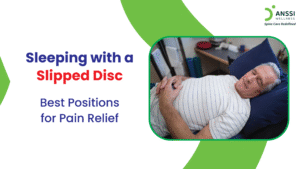Sleep is essential for healing, restoration, and overall well-being. However, many people overlook how sleep quality and posture impact musculoskeletal health.
Poor sleeping habits can contribute to chronic back and neck pain, particularly when the mattress or pillow lacks proper support. Long-term discomfort, stiffness, or pain often stems from misalignment of the spine during sleep.
By choosing the right mattress, pillow, and sleep position, individuals can significantly reduce strain on their spine and wake up feeling refreshed, not sore.
How Sleep Affects Spine Health
During sleep, your body undergoes important repair processes. But if your spine isn’t properly aligned, due to a poor mattress, an unsupportive pillow, or an awkward sleeping posture, it can lead to muscular strain and joint compression. Over time, this puts unnecessary pressure on the spinal discs, nerves, and ligaments, resulting in chronic back or neck pain.
The natural curvature of the spine should be supported during rest to reduce stress on the musculoskeletal system. Proper sleep posture promotes blood circulation, minimises muscle fatigue, and enhances spinal recovery, making it crucial for those already experiencing pain or looking to prevent it.
Choosing the Right Mattress
A good mattress supports the spine’s natural alignment, cushioning pressure points while maintaining firmness where needed.
Here’s how to choose the right one:
- Firmness: Medium-firm mattresses are generally ideal for spine support. Too soft, and the body sinks unevenly. Too firm, and pressure points build up on the shoulders and hips.
- Material: Memory foam and latex mattresses offer good contouring to body shape and help in evenly distributing weight. Hybrid mattresses combine springs and foam for support and bounce.
- Age of Mattress: An old, sagging mattress can contribute significantly to back pain. It’s advisable to replace a mattress every 7-10 years, or earlier if it’s no longer supportive.
- Sleeping Style Match: Your mattress should correspond to your preferred sleep position. For instance, side sleepers may need more cushioning on the hips and shoulders, while back sleepers require firmer lumbar support.
Investing in a high-quality, supportive mattress tailored to your sleep style can be a game-changer in reducing pain and enhancing sleep quality.
Picking the Right Pillow
Just as important as the mattress is the pillow. The right pillow keeps your head and neck aligned with your spine, reducing strain on cervical muscles.
- Back Sleepers: Choose a thinner pillow with a slight neck contour. Cervical pillows are ideal to support the neck’s natural curve.
- Side Sleepers: A firm, thick pillow helps fill the space between the ear and outside shoulder. This helps keep the head in line with the spine.
- Stomach Sleepers: While this position is discouraged for neck health, a very thin pillow or no pillow may be used to minimise strain.
- Specialty Pillows: Orthopaedic pillows, memory foam, or contoured cervical pillows can provide targeted support for individuals with neck issues or those recovering from injury.
Using the wrong pillow can tilt the head forward or sideways, putting undue pressure on the cervical spine and increasing neck stiffness or pain. A well-chosen pillow supports not just comfort but long-term spinal health.
Ideal Sleeping Positions
Your sleeping posture plays a vital role in spinal health. Here are the best and worst positions:
- Choose Side Sleeping with Pillow Between Knees: This is considered the most spine-friendly position. Placing a pillow between the knees helps align the hips and reduces pressure on the lower back.
- Choose Back Sleeping with Pillow Under Knees: Lying flat on your back allows the head, neck, and spine to rest in a neutral position. A small pillow under the knees relieves lumbar pressure.
- Avoid Stomach Sleeping: This position twists the neck to one side and arches the lower back unnaturally. It can lead to morning stiffness, neck pain, and long-term spine issues.
Maintaining consistent sleep posture aligned with the spine’s natural curves is essential for preventing back and neck pain.
Additional Tips for Pain-Free Sleep
- Sleep Hygiene: Maintain a regular sleep schedule, reduce screen time before bed, and create a calming bedtime routine.
- Ergonomics Beyond the Bedroom: Daytime posture affects nighttime pain. Use supportive chairs, avoid slouching, and stretch regularly to counteract sedentary habits.
- Stretching Before Bed: Gentle stretches for the neck and back before sleep can help reduce tension and improve mobility.
- Mattress Toppers: If replacing a mattress isn’t feasible, a high-quality topper can provide additional support or softness as needed.
When to Seek Professional Help
If you experience persistent or worsening neck or back pain despite improving your sleep habits, it’s important to consult a spine specialist. Symptoms such as numbness, tingling, radiating pain, or difficulty moving the neck should not be ignored.
Non-surgical treatment options such as ice/heat therapy, posture correction, physiotherapy and spinal decompression help treat conditions like herniated discs, sciatica, and cervical spondylosis, which are the common causes of neck and back pain.
About ANSSI:
ANSSI Wellness focuses on improving the quality of life for patients suffering from spinal issues, aiming to provide relief where other conventional treatments have failed. Through advanced non-surgical spinal decompression treatment, ANSSI is committed to helping patients avoid surgery and recover in a safe, effective, and compassionate environment.
Connect with ANSSI Wellness on LinkedIn, Instagram, and Facebook for expert guidance.



